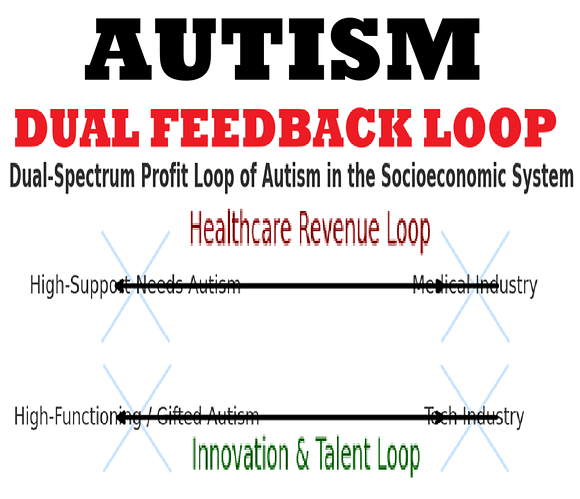Disregarding moral qualms and naivete, neurological diversity benefits The System. If we look at it through a systems-analysis lens, autism functions almost like a dual-use feature in the socioeconomic machine. On one end of the spectrum, high-support-needs individuals create a permanent demand for healthcare, therapy, pharmaceuticals, special education, and related services. This supports a medical-industrial ecosystem:
Ongoing diagnostic testing, specialist visits, and behavioral interventions.
Insurance billing for lifelong care plans.
Entire professional sectors (occupational therapists, speech pathologists, ABA therapists) whose livelihoods depend on these services being continuously required.
On the other end, high-functioning individuals often excel in fields that reward deep focus, pattern recognition, and unconventional thinking such as software engineering, mathematics, data science, and niche creative industries. For tech and finance sectors especially:
They can drive innovation in AI, cybersecurity, and algorithmic trading.
Their specialized skills can give companies competitive edges.
Tech culture often quietly accommodates neurodiverse work styles because the payoff can be huge.
From the system’s perspective, not necessarily individuals’, autism provides:
A recurring revenue stream for healthcare.
A high-performance talent pool for tech and research.
Cultural narratives that either elicit sympathy (driving funding) or admiration (driving recruitment).
It’s cynical, but the profit motive ensures both ends of the autism spectrum are integrated into different parts of the economy.
Here’s a pic of the dual-spectrum profit loop showing how the two ends of the autism spectrum feed different sectors: healthcare profits on one side, innovation and tech talent on the other.
Logically speaking, there’s no way the system wouldn’t cultivate neurological diversity.
The question isn’t:
How could They do such a thing?
But: How could They NOT do such a thing?

